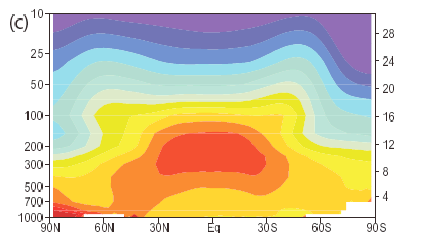One of the main lines of evidence used by the Obama administration to justify its global warming regulations doesn’t exist in the real world, according to a new report by climate researchers.
 What the tropical hotspot is supposed to look like. Graphic courtesy Dr. David Evans
What the tropical hotspot is supposed to look like. Graphic courtesy Dr. David Evans
Guest essay by Michael Bastasch, reprinted with permission
Researchers analyzed temperature observations from satellites, weather balloons, weather stations and buoys and found the so-called “tropical hotspot” relied upon by the EPA to declare carbon dioxide a pollutant “simply does not exist in the real world.”
They found that once El Ninos are taken into account, “there is no ‘record setting’ warming to be concerned about.”
“These analysis results would appear to leave very, very little doubt but that EPA’s claim of a Tropical Hot Spot (THS), caused by rising atmospheric CO2 levels, simply does not exist in the real world,” reads the report…
View original post 915 more words









 A team of scientists from the National Space Institute at the Technical University of Denmark (DTU Space) and the Racah Institute of Physics at the Hebrew University of Jerusalem has linked large solar eruptions to changes in Earth’s cloud cover in a study based on over 25 years of satellite observations.
A team of scientists from the National Space Institute at the Technical University of Denmark (DTU Space) and the Racah Institute of Physics at the Hebrew University of Jerusalem has linked large solar eruptions to changes in Earth’s cloud cover in a study based on over 25 years of satellite observations.